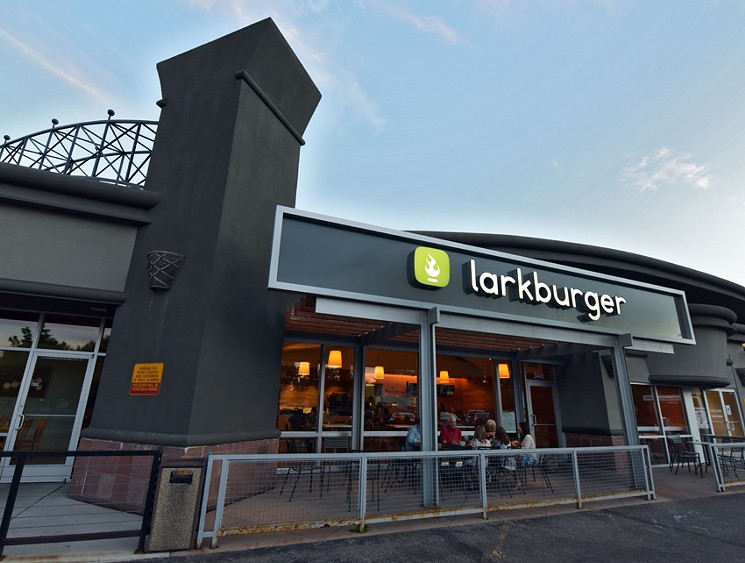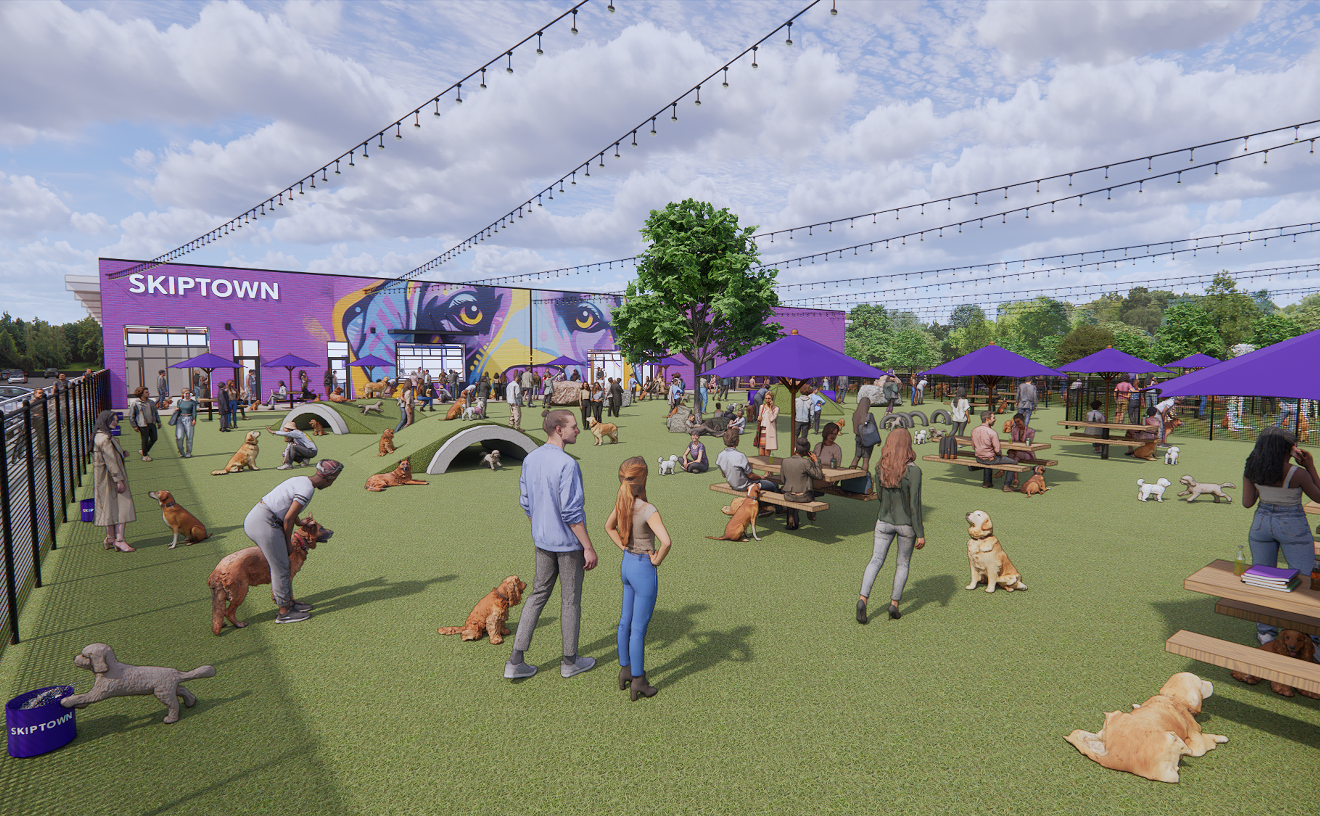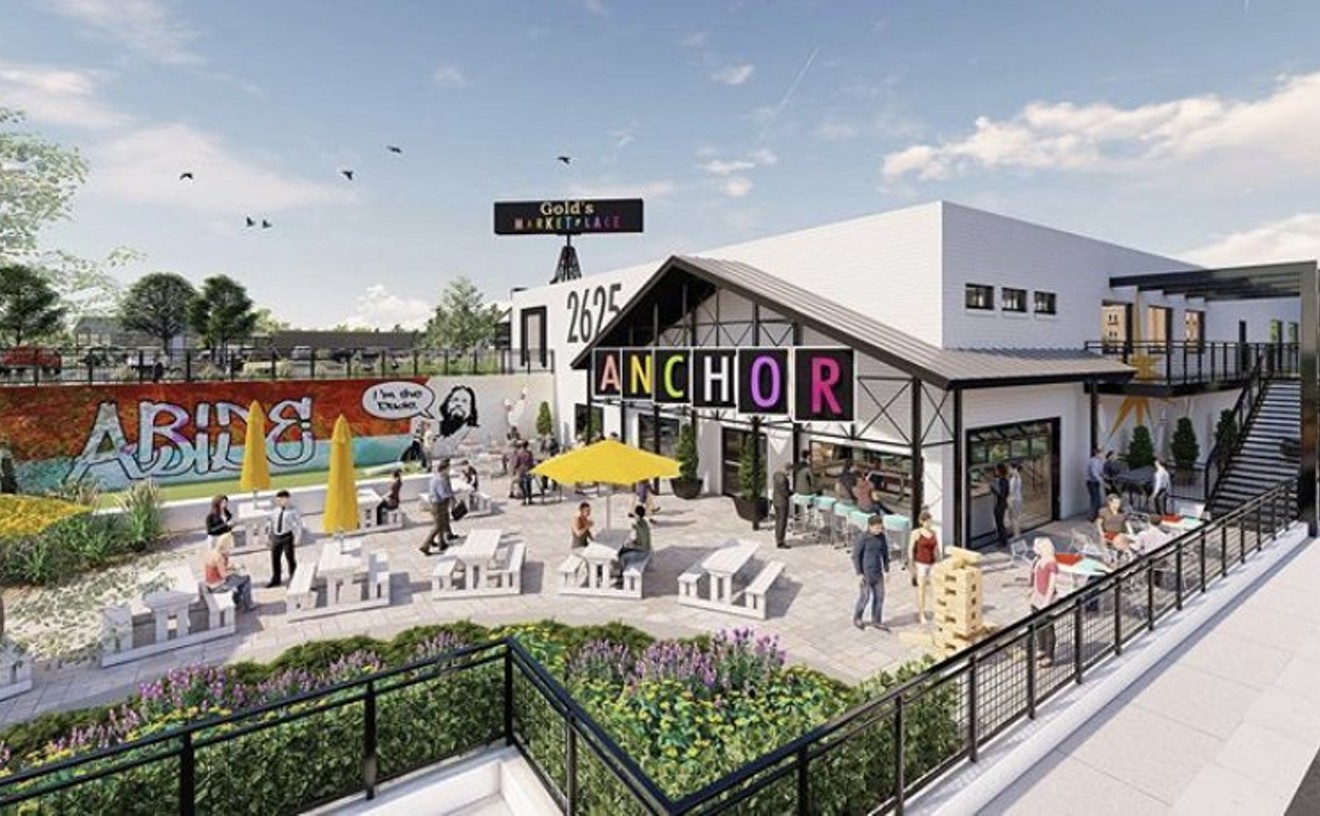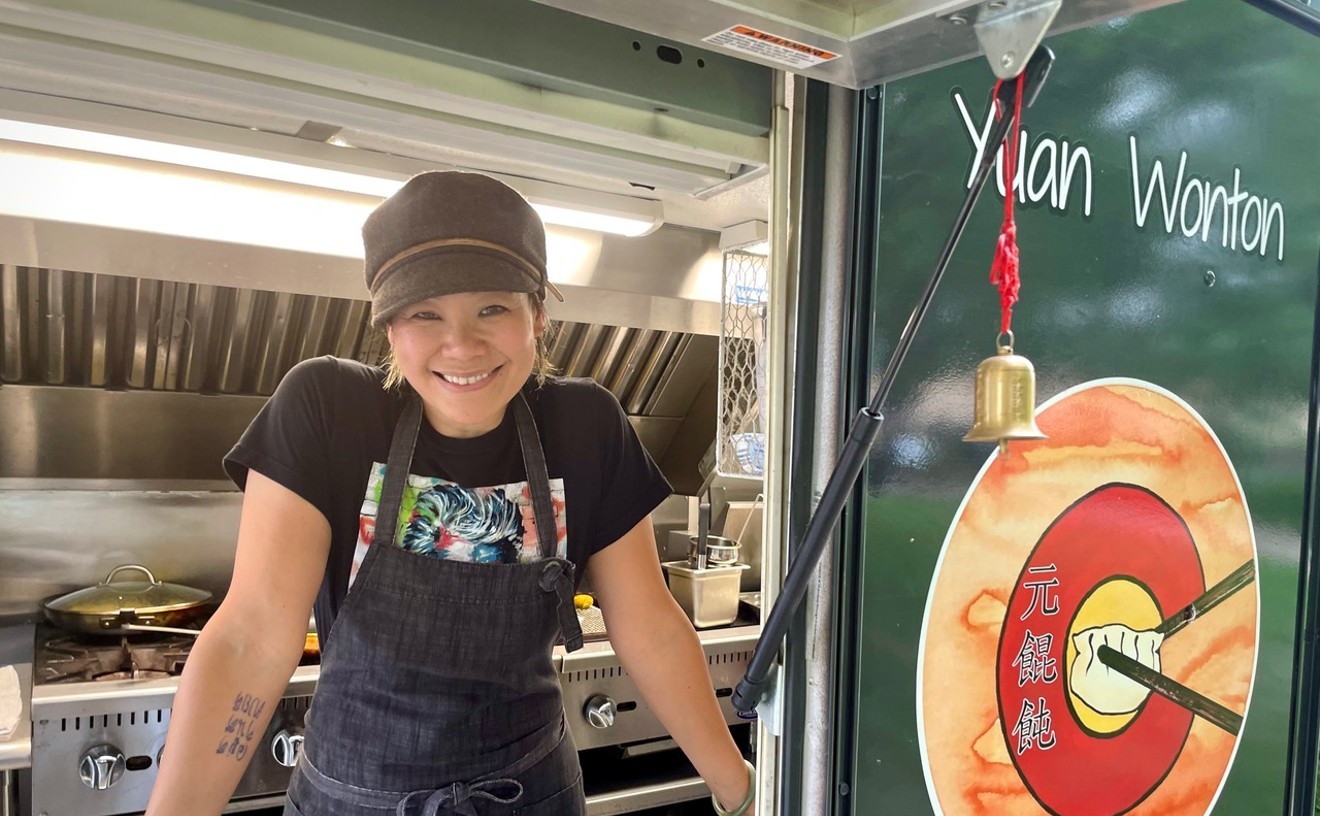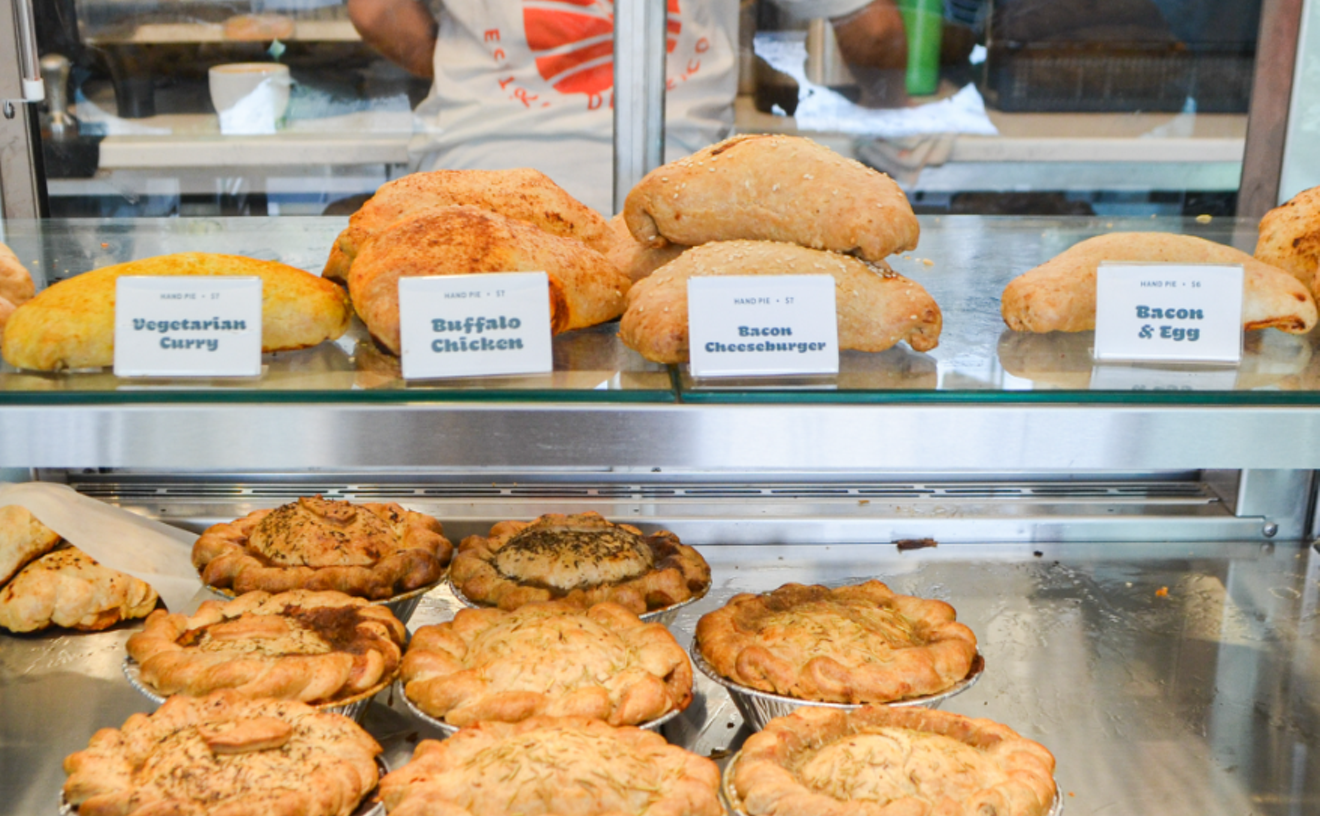That first Chipotle eventually spawned a company that today oversees more than 2,300 locations — and counting — around the world. It also inspired countless copycats and hungry entrepreneurs to rush into what would soon be dubbed the “fast-casual” segment of the restaurant industry, radically reshaping how Americans eat in the process. Larkspur chef and Larkburger founder Thomas Salamunovich calls Chipotle “the greatest creation of a restaurant in history.” Lachlan McKinnon-Patterson, the chef-owner of rapidly expanding Pizzeria Locale, hails Chipotle as the creator of an important category: “Chipotle made it possible to have great ingredients at affordable prices in a restaurant that was really convenient. They dispelled the myth that fast food was junk food.”
Two dozen years ago, though, when Chipotle founder Steve Ells signed the lease for this tiny space, he had no inkling that he was about to launch a movement. He had no plans to create an eatery empire; he didn’t even think he’d expand his burrito shop beyond one address. He was merely looking for a way to raise some quick capital to fund a fine-dining restaurant. An art history major at the University of Colorado, Ells had gone on to the Culinary Institute of America “because I loved cooking and I thought it would be a nice departure,” he recalls. “I didn’t think I would get into the restaurant business; I just thought it would be fun.”
But over the course of his two-year studies, Ells realized that he wanted to be a chef and own a restaurant, so when he graduated from CIA, he took a job at Stars in San Francisco under legendary chef Jeremiah Tower. Tower, who’d been the first chef under Alice Waters at Chez Panisse, “really helped establish this idea that with classic cooking techniques, you can use local, seasonal, artisanal American ingredients and create American cuisine,” says Ells. He soaked up the philosophy, learning to cook and taste critically.
A couple of years later, when Ells began to form plans for his own place, he knew he’d need to come up with some cash — so he began to plot a burrito joint back in Denver. “I was in San Francisco eating at taquerias in the Mission, and the burritos were different from the burritos we had growing up in Colorado,” he remembers. “They came on giant flour tortillas with everything in the middle, and they were rolled up and wrapped in foil. I’d never seen anything like that before. In Colorado, burritos came smothered with green chile and were something you ate with a knife and fork. So I started thinking, perhaps I could go back to Colorado and introduce a new way of thinking about burritos, and that would be my cash cow to fund my restaurant one day.”
Ells borrowed some money from his father to build what he’d decided to name Chipotle Mexican Grill in a former Dolly Madison ice cream shop at 1644 East Evans Avenue; he opened the doors in July 1993. “By October, there was consistently a line out the door,” he recalls. “It was hard to keep enough food stocked in the tiny kitchen to fulfill the demand.” A year later, he decided he’d open one more Chipotle; after that, he’d move on to his fine-dining restaurant. But that second Chipotle, on Colorado Boulevard, was busier than the first. So he decided to do one more. “Now we’re opening a restaurant every 36 hours,” he says.
Ells acknowledges that Chipotle was built for scaling, even if he didn’t initially intend to turn it into a chain. Because he’d planned to open his burrito joint and then move on to a fine-dining restaurant, he’d simplified Chipotle’s systems so he could eventually step out of the kitchen. “It had to be easy to operate, so we only had a few moving parts,” says Ells. “In those days, we only did burritos and tacos; we had a few meats, a few types of beans, rice, guacamole, a couple of salsas, and that was it. I remember people telling me when I opened that people would get bored, but 24 years later, we still have basically the same menu.”“Chipotle made it possible to have great ingredients at affordable prices in a restaurant that was really convenient. They dispelled the myth that fast food was junk food.”
tweet this
That simplicity enabled Chipotle to take an old concept and present it in a new way. “The limited menu allowed us to focus on just a few things and do them really, really well,” Ells says. “What made us special was our ability to have a few raw ingredients — we only have 51 ingredients, and you can find all of them at the farmers’ market — and prepare them according to classic cooking techniques. We’re the only fast-food restaurant of any scale that has knives and cutting boards and pots and pans and cooking equipment in the kitchen; we bring in whole raw ingredients, and our teams go to work prepping and cooking. There’s a realness and wholesomeness that people find so attractive. We showed what fast food could be. Fast food didn’t have to be a highly processed offering.”
As Chipotle grew, so did Ells’s mission: He decided he wanted to change the way people thought about fast food.

Steve Ells never intended to launch a revolution, but that’s what the first Chipotle did.
Anthony Camera
Other concepts touting better-quality food, fast, sprang up so quickly that Denver became “the cradle of fast casual,” according to Sam Oches, editor of industry publication QSR magazine, who calls Chipotle the “forefather of fast casual.” Qdoba, Illegal Pete’s and Noodles & Company all launched in 1995; Tokyo Joe’s opened its first location in 1996, as did Einstein’s Bagels, an offshoot of Boston Market, a Golden-based precursor to the fast-casual boom. “Residents embraced high-quality fast food,” says Oches. “Once brands like Chipotle and Noodles & Company were up and running, they served to further foster brands based there. Would Tokyo Joe’s, Modern Market or Mad Greens be there without Chipotle and Noodles? [Those predecessors] served to make Denver a more attractive option for new businesses.”
These restaurants helped define the early days of the category, which wasn’t even named until the mid-1990s: A Mexican concept tried to trademark the phrase, and the trade publication Restaurant Hospitality seized on it as a descriptor of the new, and growing, segment. (An alternate version of events gives credit for the label to Paul Barron, who launched the website Fastcasual.com in the late ’90s.)
Today, restaurants in the fast-casual segment are defined as selling higher-quality food at a $6 to $12 price point, Oches says. They often serve meals on real plateware and in a more comfortable environment than traditional fast-food joints. “And fast casual consolidated around customization, because everyone imitated Chipotle,” he adds.
Fast casual has grown into a $47 billion sector nationally, and continues to be the fastest-growing segment of the dining industry. Although its growth has slowed from the double-digit increases of its heyday, it’s up 8 percent from last year, according to Technomics, a data firm. The fast-casual category makes up 8.4 percent of the country’s overall restaurant industry.
Still, long after Chipotle went worldwide, the Front Range has continued to be fertile ground for an inordinate number of big players in the industry. Smashburger, Garbanzo, Larkburger, Mad Greens and Modern Market came online in the mid-2000s; today, concepts like Pizzeria Locale and Biju’s Little Curry Shop are beginning to expand, finding success in Colorado and beyond.
Carolyn Livingston, communication director for the Colorado Restaurant Association, cites a 2013 study from the NPD Group that pegs the Front Range fast-casual density, or number of fast-casual restaurants per 100,000 people, at more than two times the national average. “I think the trend has continued,” she says.
While Ells’s vision for Chipotle was prescient, Colorado may have been uniquely suited to promoting this new way of eating — and the state’s health-conscious populace may have helped define markers of the category that still resonate today. One of the restaurateurs in that early boom identified characteristics of the state’s dining public that help explain why.
As hungry Denverites crowded the first Chipotle, Aaron Kennedy was forming his own plan to upend the restaurant industry, and he was much more deliberate about his long-term goals than burrito-maker Ells. In 1993, Kennedy was living in the West Village of New York City and working for Pepsi in marketing while commuting on weekends to Boulder, where his wife was employed. In the Big Apple, Kennedy regularly dined at a small noodle shop called Marnie’s Asian Noodle Shop. “From the moment I saw it, I was strangely captivated,” he recalls. “It had this classic American-diner aesthetic. There was a guy at the burners sautéing beautiful noodle dishes from around Southeast Asia. The menu was about napkin-sized, about ten or so noodle dishes, and not just from one culture — there was pad Thai, yaki soba, coconut curry. I love noodles. I’m not a big meat eater, so this was perfect for me. I was walking down the sidewalk after leaving it the first time, and I was just hit by a lightning bolt: I would create a global noodle shop.”
Kennedy recognized that the world was speeding up: fax machines, mobile phones and the nascent Internet enabled faster work.“I figured people were going to get busier,” he says, “and America was either going to eat more fast food, or someone was going to start providing better options.” Intent on being that provider, he frantically cobbled together a business plan for Noodles & Company, which asserted he’d build “twenty to forty restaurants across four to five cities within five to seven years,” he recalls. “The very first business plan described it as ‘swift serve.’ I didn’t want the word ‘fast’ associated. I knew it was a different segment; I just didn’t know what to call it.”
Denver was the obvious launch point for Kennedy, who had a market-research background and ran the data on the area before making the leap. “Denver and Boulder’s lifestyle is healthier and more active than anywhere else,” he says. “So if fast casual was going to succeed, it was going to be here. I’d never lived here, but I had the data that said people who live here care about the quality of food they eat, what their weight is, their energy level. That’s what we’re selling. It’s not about selling food; it’s about selling an energized way of feeling when you walk out of here. Colorado was receptive.”
But there was more to the concept than health: Kennedy still recalls the revelation that came when he divided chain restaurants along a spectrum of high and low quality, and fast and slow service. Companies like Morton’s and Capital Grille were operating in the slow-service/high-quality realm; fast food was firmly rooted in the fast-service/low-quality threshold; and restaurants like Applebee’s and Chili’s were creeping into the slow-service/low-quality space. Subway and Quiznos (which had gotten its start in Denver in the late 1980s) were moving toward the nexus of fast service and high quality, but no company was capitalizing on it — and Kennedy thought the model would resonate in the Centennial State and beyond.
Still, he had a lot of naysayers. “One of the early challenges was finding how much time people are willing to give you,” he says. “How fast do you have to be? In the early days, we were told by the restaurant industry’s old guard that you can’t do this — you’re going to end up being fast food or providing diner-style table service. We were told over and over that we couldn’t do high-caliber food fast. I didn’t have a restaurant background, so I didn’t believe that.”
Kennedy showed thirty friends and family members his business plan, and 23 of them invested in his concept, kicking in anywhere from $500 to $50,000. He picked up the lease for the old Hummel’s Deli, which had served the Cherry Creek neighborhood for more than half a century, and in October 1995, Noodles & Company started serving macaroni and cheese, pad Thai and fettuccine Alfredo from a Chipotle-like line of steam trays.
Unlike Chipotle, though, Noodles wasn’t an immediate hit: “Within about two months, we got a scathing review in a certain Denver newspaper that made things harder for us,” says Kennedy. “The Sunday after the paper came out, we did almost no business. I remember driving home with tears streaming down my face, thinking my dream was going to die.”
Instead, Kennedy and Ross Kamens, Noodles & Company’s founding chef, went back to the drawing board and identified fifteen things they needed to change. One of those was cooking style: “We started sautéing every dish to order,” says Kennedy. “It added a little time, but the food was so much better.” The team also raised the prices to allow for better ingredients and employees, and changed the dining aesthetic from a diner vibe to its current earth tones and natural woods.
Noodles took off, and was soon operating restaurants in several states.

Aaron Kennedy saw the world getting busier and was intent on feeding people better food, fast.
Anthony Camera
As Noodles refined its ingredients, the team scoured the market for suppliers of then-hard-to-find items, such as Thai rice noodles and Indonesian sambal paste. “Fast-casual was about more chef-driven food, sold fast and affordably,” says Kennedy. “I think that basic premise is still true.”
A drive to improve quality also led to Chipotle’s emphasis on environmental stewardship. In the beginning, Chipotle extolled the virtues of its fresh food, but it didn’t get into sustainable sourcing until it was operating about fifty locations. At that point, Ells set out to improve his carnitas, then a flagging item on the menu. The founder blamed the sluggish sales on the quality of the pork he was using: “Something about the pork was not as good as I remembered as a kid,” he says. He read a story about pig farmer Paul Willis of Niman Ranch in Ed Behr’s The Art of Eating magazine, and a lightbulb went on.
Ells called up Willis and asked for samples of pork shoulder. “We made batches, and it was absolutely delicious,” he recalls. “I told them how much I needed, and they didn’t have enough. I went and visited, and the pigs were raised in a different way than was typical — typical was in confinement. These pigs were out in a pasture or in deeply bedded barns, and they were not given antibiotics or growth hormones. It was a sharp contrast with these industrial factory farms, where the animals are living in cruelty and the pork didn’t taste as good. It took a while to get enough farms into the network to meet our demand, but we did. The success of the new carnitas — customers really enjoyed it and the story, and were willing to pay more — caused me to look into all of our ingredients.”
That success inspired Chipotle’s Food With Integrity program, which became a defining pillar of the company’s brand. Ells says the company continues to analyze its supply chain and look for ways to improve its food, and its buying power has encouraged even conventional producers like Tyson Foods to rethink their animal-rearing practices and reconfigure their systems to align with Chipotle’s standards.
Todd Coerver, CEO of Larkburger and a recent transplant to Colorado, points out that these values resonate with Colorado’s broader brand, which in turn really resonates with millennials, today’s most powerful consumer segment. “Colorado is one of the places known for the environmental piece; it’s such a big part of our DNA,” he says. “Colorado’s longtime interest in that matches up with today’s primary consumer, the millennial. The value system aligns. The millennial generation is the first generation that’s environmentally conscious and socially responsible, and those factor into how they choose to do business with a brand. It’s good timing. What Colorado has been doing all along is a great fit for the next generation of major consumers.”
No matter where they live: Chipotle and Noodles & Company met with little resistance as they expanded beyond Colorado state lines to Kansas City, Missouri, in the case of Chipotle, and Madison, Wisconsin, for Noodles & Company. In fact, Noodles didn’t struggle with bringing its concept to new markets until it hit Dallas, where Kennedy blames the dining public’s competing values for a mediocre start. “Dallas is tough for restaurants if you aren’t based there,” he says. “They would contend that they’re the center of high-quality sit-down restaurants in terms of chains, so it’s more of a sit-down-dining consumer. They value protein and quantity to a greater degree than a Colorado consumer. That’s not what we offer.”
As the category matured, and as Americans learned more about food and sourcing via farm-to-table dining and the booming Food Network, the next batch of fast-casual leaders seized on the quality markers emphasized by their forefathers: Fine-dining chefs leaped into the fray, offering meals built on sustainably raised ingredients and wholesome offerings.
QSR’s Oches calls this evolution fast-casual 2.0: “We separate 2.0 from traditional because these restaurants often have alcohol service, a customer-service component, are focused on doing good in the community, are chef-driven and may source locally,” he says. They were probably helped along by the 2008 recession, he adds: The fast-casual sector grew during leaner years because these restaurants offered premium quality at a lower price point and drove the segment beyond a desk-warrior grab-and-go lunch to a viable option for a nighttime meal.
And again, Colorado led the way.
One of the earliest local players in the 2.0 space was Larkburger, which Thomas Salamunovich launched in Vail in 2006. At the time, he didn’t see many fine-dining chefs jumping on the fast-casual bandwagon. “Now it’s everyone,” he says. “Everyone is sick of being behind their stove; they want a way to make passive income. And life has become more casual. We want to break bread with people, be active, know where our ingredients are coming from — and hope that they’re coming from as local a source as possible.”
Salamunovich’s early career parallels that of Ells: He, too, worked under Jeremiah Tower at Stars out in California. “California is where we all learned about fresh ingredients,” Salamunovich says. “Farm-to-table is what I knew.” But unlike Ells, Salamunovich stayed in fine dining for years, working with Wolfgang Puck and doing a stint at a three-star Michelin restaurant in France before moving to Vail for the active lifestyle. After six years behind the burners in some of the valley’s best restaurants, in 1999 he opened Larkspur, a fine-dining New American restaurant at the base of Golden Peak.
At that restaurant, Salamunovich says, “I wanted to make a great burger. I’m from L.A., and In-N-Out opened when I was four years old. Those burgers are what I knew my whole life, long before the In-N-Out craze. So I fell in love with hamburgers as a kid, and when I decided I wanted to do this, I focused on a great bun and sauce profile. There are two reasons why our burger took off. One, we toasted the bun — fine-dining restaurants never did before. And two, we put sauce on our hamburger. It used to be that if you got a hamburger in any restaurant, you had to ask for packaged mayo or ketchup. When I said we’re going to sauce our hamburger, it was amazing how many buns we got sent back.”
Salamunovich also looked at texture and temperature variation, and obsessed over compiling the perfect combination of toppings, matching the acid of perfectly ripe tomatoes to the sweet tang of raw onion and the umami of the burger. His work paid off: By 2004, the burger had been christened Vail’s best for several years running.
The burger had just nabbed that honor for a sixth time when Salamunovich heard about Shake Shack, Danny Meyer’s brand-new hot-dog cart in New York City. Salamunovich had just discovered a new temperature-control technology that would help keep quality high when cooking at volume; he took the confluence of events as a sign to launch Larkburger. “I said, ‘We’re gonna open a hamburger restaurant!’” recalls Salamunovich. He proceeded to raise the money for his restaurant at that night’s dinner service, hitting up his Larkspur regulars for investment.
Salamunovich was particularly interested in creating a place where everyone could afford to eat food prepared with culinary technique. “Larkburger was a communal place to eat for the masses. Suddenly there were a lot of people who could afford our food instead of just a small group that could afford what we were doing at Larkspur,” he says.
And because he was in the Vail Valley, he focused on healthful, well-sourced ingredients to build the menu: “I am all about cooking with solid technique and completely enjoying food, and using sound, whole ingredients that are not processed in any form and have a low glycemic index. The burgers are really based on steak au poivre — they’re high acid with some fermentation, which is great for digestion. That’s how I want to eat.” Early on, Larkburger also had a gluten-free focus, because the chef’s wife has celiac disease. “This was shaped entirely by a lifestyle of health,” Salamunovich says.“Denver and Boulder’s lifestyle is healthier and more active than anywhere else. So if fast casual was going to succeed, it was going to be here.”
tweet this
“Larkburger really reinvented what the burger means,” adds Larkburger’s Coerver, who is overseeing the brand’s expansion beyond Colorado. “When you think burger, you think beef, but Larkburger does ahi tuna, adobo marinated chicken, turkey and more. Then there were all these culinary techniques being applied in that kitchen. And the team really understands environmentally what’s going on. We have an unparalleled commitment to sustainability, from the reclaimed cypress on the walls to the smallest trash can in the restaurant business; we’re composting and recycling everything else.”
That’s important, says Coerver, because the game has changed: It’s no longer enough to just be committed to good sourcing. “People used to be in awe of what Chipotle did in terms of sourcing. It was totally new; it broke the mold. Now you can’t be known for just one thing. You need a few dimensions — chef-driven, sustainability, better-for-you ingredients and sensitive to different diets.”
That fast casual 2.0 would also emerge out of Denver was fairly obvious to Modern Market co-founders Anthony Pigliacampo and Robert McColgan. Armed with an idea for a health-centric fast-casual chain, the pair, then living in New York City, analyzed a number of markets for a flagship, and settled on the Front Range because it was such a clear choice.
“[Colorado] was high on the list because it’s one of the few areas with a wide range of demographics in a small area and is not polluted by other areas,” says Pigliacampo. “With Colorado Springs, Boulder and Denver, you get pockets similar to all of America. Colorado Springs is similar to red-state America. Boulder is liberal and highly educated. Denver is one of the newer second-tier cities that are rapidly urbanizing. Highlands Ranch is a bedroom commuter suburb. And this is all in this tight geographic band, which was really interesting to us.”
Just as important, Pigliacampo says, was the fact that Colorado consumers knew what fast-casual food was. “Fast casual was something that customers understood already,” he says. “It was an environment where we didn’t have to educate the guest, which meant that our concept’s success wouldn’t hinge on educating a customer group — it was more, let’s put a different offering in front of the guest and see how it resonates.” As a bonus, the founders saw a lot of experienced talent; many team members they eventually hired had already worked in a fast-casual space.
Pigliacampo freely admits that he and McColgan didn’t know much about cooking when they went into the business. “I was coming at it from the customer perspective,” he says. “If you’re eating out all the time, why does it have to be terrible for you?”
The first Modern Market (then called ModMarket) opened in Boulder in 2009, offering an array of salads, pizzas and soups that catered to all sorts of different dietary needs. The company quickly added sandwiches, Pigliacampo says, because customers kept asking for them. They were also pushed to improve their food.
“When we opened, I didn’t think it would be possible to serve the quality of food we serve now,” says the founder. “It has gone up by orders of magnitude. A lot more culinary talent has focused on the fast-casual space, and that has forced everyone to raise their game. General awareness by the guest has increased, too. A lot of our guests have eaten extremely high-quality food and have a radically more discerning palate than our guests seven years ago.”
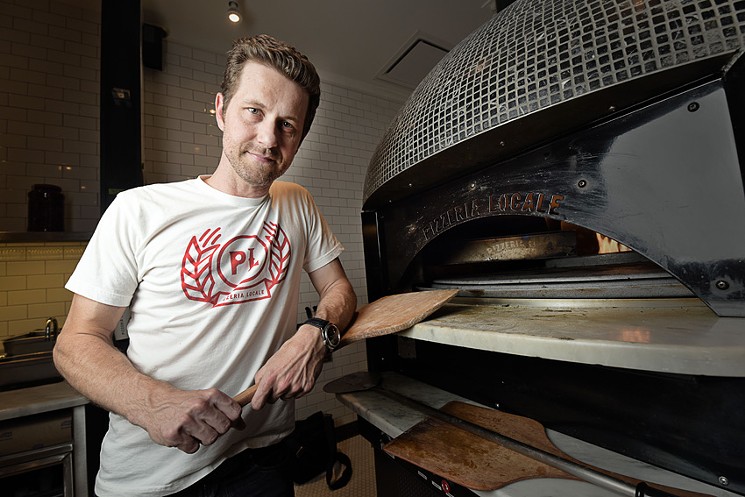
Lachlan MacKinnon-Patterson gave up running a fine-dining kitchen to make a broad impact on how America eats.
Anthony Camera
With the original Locale, which opened in Boulder in 2011, Stuckey and MacKinnon-Patterson set out to create a true Napolitano pizzeria: They imported an oven (because “in Naples, pizza’s only considered to be done right if it’s made in one of two ovens,” MacKinnon-Patterson told Westword at the time) and sent staffers to Italy to learn to work dough exactly the right way. Controversially, they served pizzas unsliced, instructing diners to use their forks and knives, because that’s the way pizza is consumed in Naples.
“We opened the original Pizzeria Locale in Boulder to do something completely different than what we were doing at Frasca,” says MacKinnon-Patterson, who now oversees the fast-casual version of Locale and its expansion. (Stuckey’s domain is Frasca, the original Pizzeria Locale — which is not part of the growing chain — and the forthcoming Denver fine-dining restaurant Tavernetta.) “As the restaurant started to pick up momentum, people became enamored with eating pizza like this. Locale is not the only example; at the same moment, there was a big movement about wood-fired Neapolitan restaurants with cool wine lists, where you could drink Krug champagne and eat pizza. Awareness was building in all sorts of towns all over North America, and this was very, very different from 99 percent of the pizza out there.”
But that wasn’t enough for the chef, who began thinking about how he could be making a broader impact. “I realized that although Locale was getting successful, I was only taking care of a finite number of pizza eaters. I started thinking about my kids — for a lot of kids in America, pizza is fast food. They’re eating high-fructose corn syrup, and there are 24 ingredients in the dough. I thought, is there a way to unpack all the ingredients at the original Locale but leave the service behind? Could we serve the same food for a fraction of the price?”
The first step was jettisoning the oven — a traditional Neapolitan oven simply couldn’t handle the volume that a fast-casual model relies upon. So the team spent eighteen months developing a suitable replacement before opening the first fast-casual-style Pizzeria Locale at 550 Broadway in Denver. Then Locale re-examined its ingredient list, figuring out where it could ditch imports while maintaining quality. “We have two goals here with the ingredients: We want to use great ingredients that are sustainably raised and find exceptional ingredients that fit our commitment to tradition but are raised [domestically],” says MacKinnon-Patterson. “When I walk into great restaurants, I expect it to be this way. Most restaurants can’t do that at this price.”
The hardest code to crack was the flour. In the early days, Locale imported its flour from Italy, but a lot of it was just being milled there; it was actually being grown in America, which means it wasn’t always fresh when it arrived. “Flour has this unbelievable aroma when it’s first ground, and then it’s gone some months later,” MacKinnon-Patterson says. The company tried several domestic suppliers before settling on its current flour, cultivated and milled in the Dakotas and Minnesota, which fills the restaurant with the scent of baking bread.
“Pizzeria Locale is not going to win a James Beard award, but it’s going to change more people’s lives than Frasca. Both are really important.”
tweet this
Toppings include Niman Ranch meats and La Quercia prosciutto — “There aren’t many fast-food restaurants serving prosciutto,” he notes proudly — and you can supplement your pizza with local craft beer particular to the location of any given Locale.
Ells thinks that obsessive eye for improvement is what gives Locale its potential, and it’s why Chipotle invested in the pizzeria. “We eat a lot of pizza in the United States, and I think there’s an opportunity to offer better pizza,” he says. “Lachlan’s pizza at Locale is amazing. If you compare Chipotle with typical fast-food Mexican, I think there’s that much of a difference between Locale and large-scale pizza chains. I think Lach can really change the way people think about pizza and provide a much more elevated experience.”
Although MacKinnon-Patterson says Chipotle steers clear of Locale’s operations, his mission echoes Ells’s mission at Chipotle: to change the way people think about fast-food pizza. And he’s excited about the impact he can make long-term, which means he’s happy to leave behind the day-to-day of running a fine-dining kitchen.
“Pizzeria Locale is not going to win a James Beard award, but it’s going to change more people’s lives than Frasca,” he says. “Both are really important.”

Larkburger CEO Todd Coerver believes the Colorado brand infuses fast-casual restaurants and resonates with millennial consumers.
Courtesy of Larkburger
For starters, says Salamunovich, now a consulting chef with Larkburger, these restaurants have broadly expanded access to high-quality food. “The food is less precious,” he explans. “Food is meant to be enjoyed in all demographics, and Larkburger really hits on all demographics. This is a democratic concept — no one has to pay for the expensive wine.”
Ells echoes that sentiment: “Better-quality ingredients and better cooking techniques used to be an elitist pursuit. I would argue everyone should have access to great ingredients and classic cooking techniques. It tastes better, I believe it’s better for you, and it’s better for the environment.”
By providing that access, the fast-casual industry has likely had a major impact on public health, says Kennedy, who left Noodles & Company in 2008. “The obesity rate is no longer climbing in the U.S., for the first time in decades. I think that’s driven by the younger generations,” he says. “They’ve embraced fast-casual dining, and they understand it’s about the quality of food, not just quantity. When I was young, I had to go to places like Dairy Queen. I could have afforded a Chipotle burrito, I could have afforded Noodles, but they didn’t exist. The category has blossomed, and younger generations are more fit and better nourished.”
Today’s consumer, he adds, is put off by the smoke and mirrors of fast-food production. “The consumer today is so savvy; they can sniff out the inauthentic manufactured idea,” Kennedy says.
And most of these restaurateurs think that the demand for quality food will only improve as today’s kids become a major consumer segment. “When we started, I was concerned children wouldn’t love [the burgers] because they lack sugar,” says Salamunovich. “But children love Larkburger. We have so many families that have been bringing their kids for ten years — it’s been a regular part of their life the entire time.”
Chipotle, the concept that started all this, is now renovating the original store on East Evans. Over the past few years, the company has suffered some major growing pains, with sales dropping after a series of foodborne-illness outbreaks were tied to the restaurants and a recent hacking incident. But whatever else fast-casual concepts did collectively, they certainly made good on Ells’s mission: to change the way people think about fast food.
Not bad for a little East Evans Avenue burrito joint.



